Sliding, hinged, swing, bifold, pivot: how many shower enclosure doors do you know, and how do you pick the right one for your shower.
Designing the shower area can be a surprisingly complex task, considering the many different possibilities available today for every single element of the shower (such as the shower tray, drain, taps, shower enclosure, wall cladding, etc.). We will outline the criteria for choosing the shower door and give a quick overview of different design options in this article.
To begin with, let’s identify the elements that can guide the choice, which are:
- the width of the shower
- the clearance in front of and inside the shower
- style and design
1. Width of the shower door
It is necessary to measure the width of the shower space from wall to wall before choosing the size of the door. Based on the size of the shower space, a fixed glass panel may be needed next to the door to reduce the opening (and therefore the clearance required in front of the shower). For people of average build, the shower should have a net clear opening of approx. 50 cm.
Measuring your shower alcove:
1 – Measure the distance between the walls on both sides (with the wall tiles or cladding already in place). The width measurement must be taken at three different heights (one at the level of the shower tray, another at mid-height and another at a height of approx. 2 metres) to verify whether there is any unevenness.
2 – A shower enclosure frame’s thickness can be determined by measuring the edge of the shower tray.
3 – It is also important to consider the type of wall (plasterboard or masonry), which will determine the maximum weight of the enclosure and how it will be fixed.
2. Shower door clearance
Regardless of the type of shower door, before focussing on aesthetics it’s important to carefully consider how it opens and closes, so as to understand the clearance needed.
Moreover, the presence of furniture, windows, doors, sanitary ware, protruding radiators, or any other element sitting directly in front of the shower dictates the choice. The door should be chosen also taking into account when the shower will be used typically, as well as whether another person may be in the bathroom at the same time.
The size of the interior shower space also matters when it comes to inward opening doors (such as swing or bifold doors): pay attention to the location of wall-mounted taps and fittings in this case.
3. Design
Here are the different types of shower doors you can choose from as possible solutions:
- hinged door
- swing door
- sliding door
- pivot door
- bifold door
- fixed panel + hinged door
- walk-in
The hinged door is the one that takes most floor space in front of the shower, as it shouldn’t interfere with the safe use of the cabinets or any traffic flow in the bathroom. It is very elegant and minimalist, and indeed one of the most popular solutions. It is perfect for small and medium-size alcove showers, but less suitable for ones that are wider than 90 cm. Make sure you choose a door opening direction that allows easy access to towels and bathrobes.
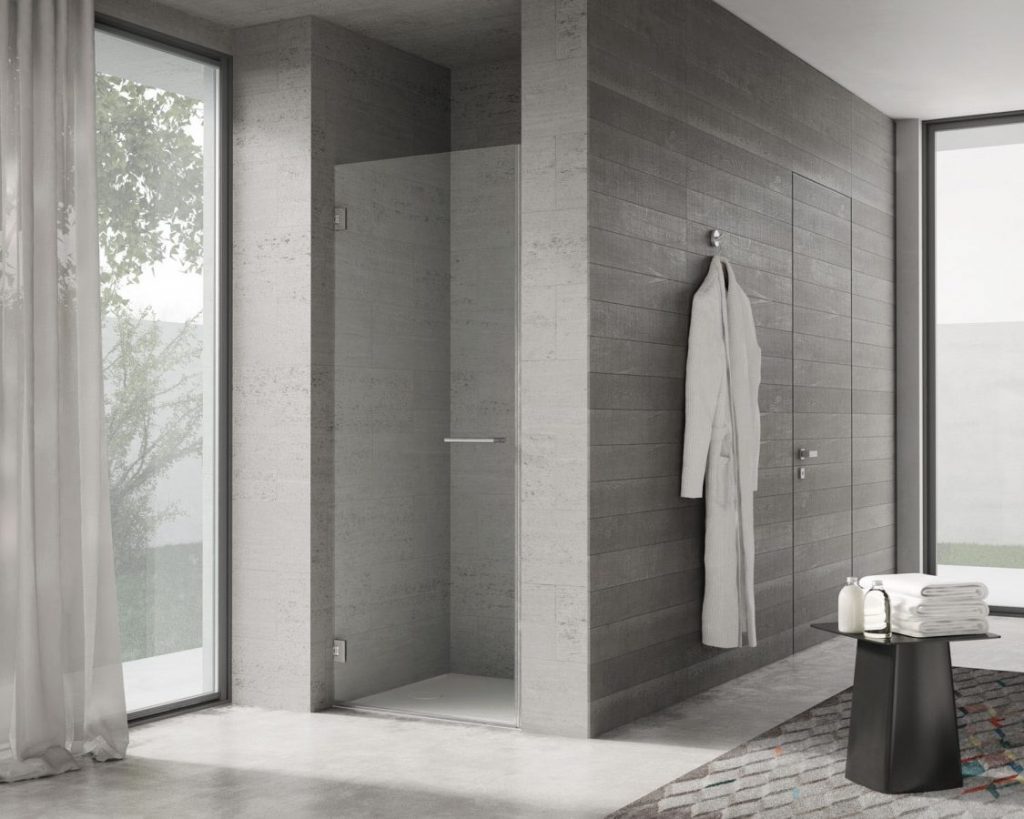
A sliding shower door, on the other hand, takes up no floor space but reduces the shower’s usable opening by more than half its width. This solution is preferable for showers that are at least 110 cm wide.

Brave model.
A swing shower door consists of two door leaves with 180-degree opening both inwards and outwards: this is a practical, elegant solution for alcove showers up to approximately 130 or 135 cm in width.
A similar alternative is the bifold door, with a folding mechanism that splits the door in two and glides to the right or left of the shower enclosure, taking up hardly any space on opening. A bifold door can open both inwards and outwards and is ideal for small or medium-size showers.
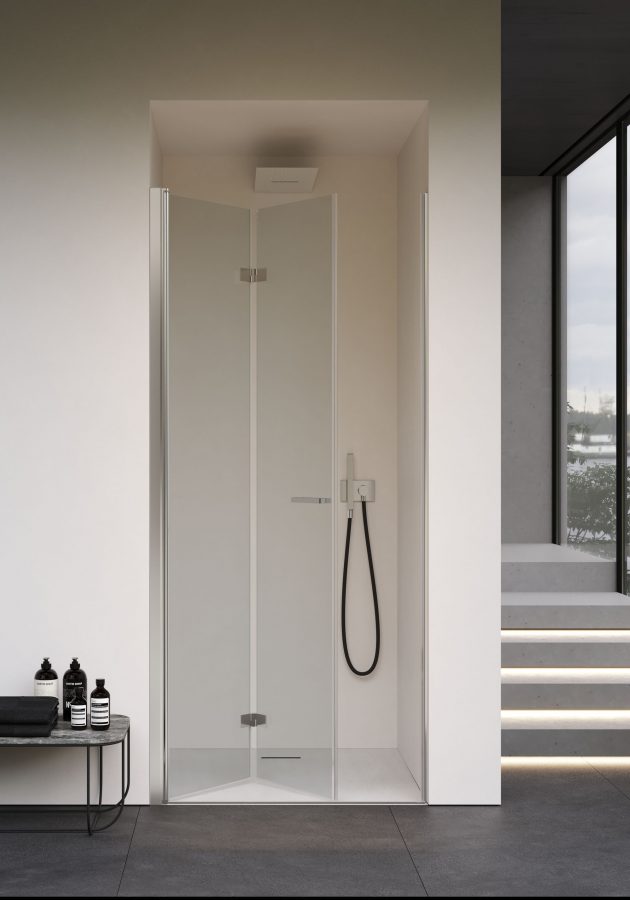
Alcove showers with particularly large openings can be reduced by adding a fixed side panel next to a hinged door.

If the alcove shower is wider than 150 cm you may consider opting for an open shower enclosure with just one fixed glass panel. This is known as a walk-in shower enclosure, an elegant, minimalist solution perfect for any modern bathroom (and for people who don’t like shower doors).

Still in doubt? Our online configurator is here to help!
The Disenia website features an online configurator, a useful tool for selecting and visualising the shower enclosures that best meet individual requirements in terms of dimensions and style preferences. Try it now: design your shower with just a few clicks!

Check out our mini guide on choosing the ideal shower enclosure, or let our Pinterest board inspire you.
If you prefer to visit one of our showrooms, ask our dealers for advice on choosing your shower door.

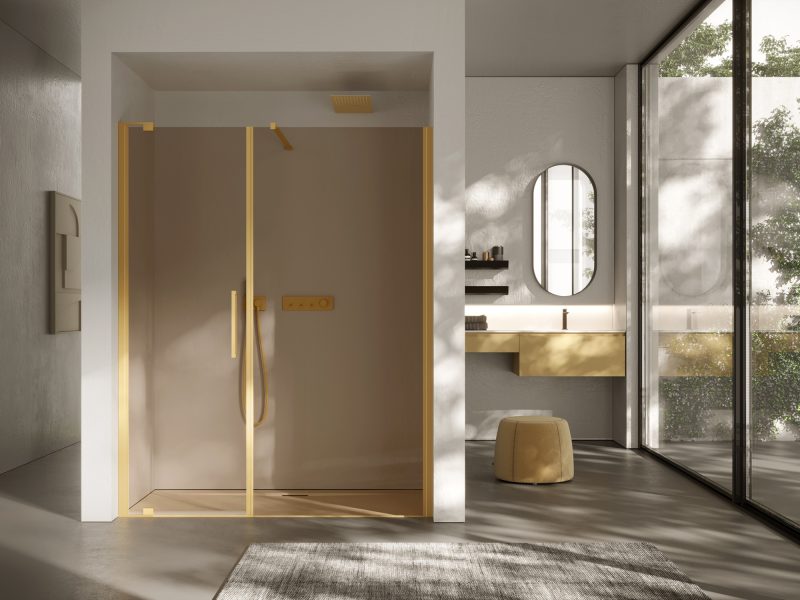

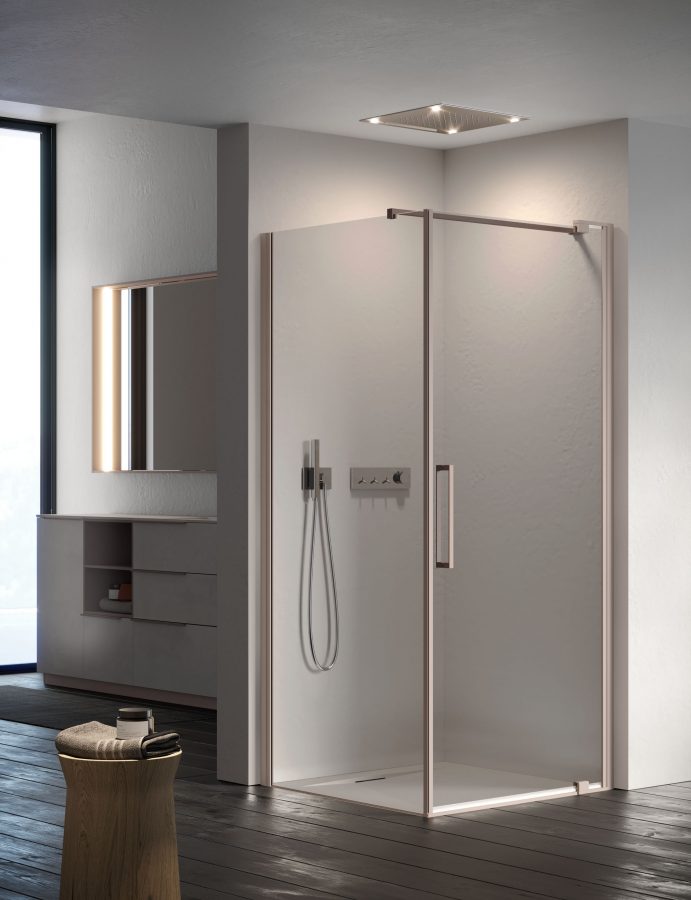
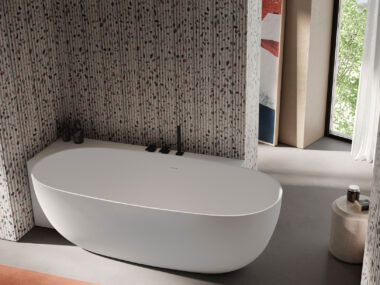

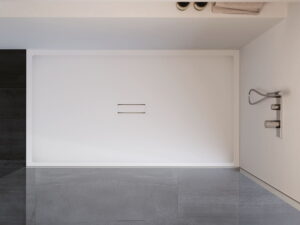
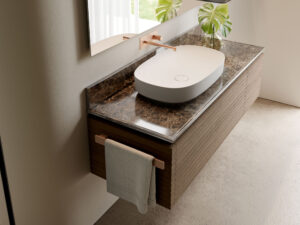

 Necessari
Necessari
 Funzionali
Funzionali
 Statistiche
Statistiche Marketing
Marketing